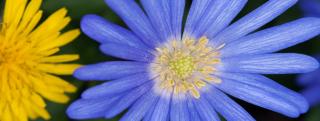

Grecian windflower, a kind of anemone, is a bulb flower that is outright unique and very ornamental.
Anemone facts, a short list
Name – Anemone blanda
Family – Ranunculaceae
Type – tuberous perennial
Height – 5 to 12 inches (5 to 30 cm)
Exposure – full sun, part sun
Soil – ordinary, well drained
Flowering – March to May or September/October
It will decorate edges and rocky ground but also flower beds and bouquets in spring or summer. If you’ve got a terrace or balcony, it will also grow well in garden boxes and containers.
Anemone is planted in spring or in fall (preference for fall) and always in well drained soil, or even sandy soil. It’s important to avoid any excess moisture that might lead the bulbs to rot.
It is very simple to do, and it’s even recommended to multiply your anemones every 2 or 3 years. This regenerates the growth base and rejuvenate older bulbs.
Even though pruning isn’t necessary, you can eliminate wilted flowers regularly (deadheading) in order to boost flower-bearing.
Once all the leaves have wilted away, and in no case before they have done so, you can cut them off very short. Simply spread the cut leaves together with other dried leaves over the bulbs to protect them over the winter.
Anemones have blooming periods that are spread in various seasons of the year from spring to fall, but Grecian windflower blooms from spring to summer.
Thus, spring-blooming anemones are Anemone blanda or Grecian windflower, A. apennina and A. coronaria, more famous under the name Poppy anemone or Spanish marigold.
 For anemones that flower in summer or fall, there’s the renowned Japanese anemone, A. bupehensis and A. rivularis which is one of the first to bloom in summer.
For anemones that flower in summer or fall, there’s the renowned Japanese anemone, A. bupehensis and A. rivularis which is one of the first to bloom in summer.
These are all perfect for lining edges, and also will thrive in underbrush or to cover a bare surface.
Flowers are generally white or blue, but some species will boast red or purple flowers. They appear in spring, around April to May.
Watch out if you have children because this plant is poisonous.